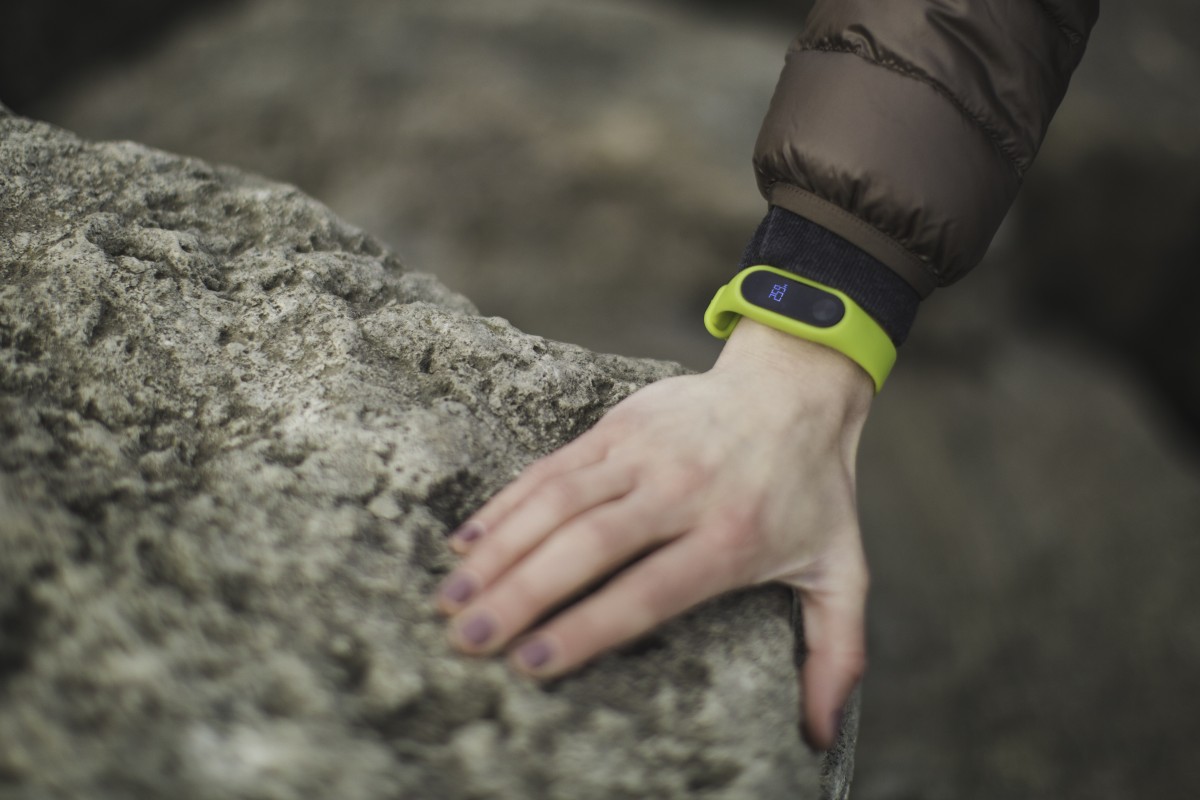Japan is a country that loves its robots. From elder care, to pet ownership, to pint-pulling, one is hard-pressed to find a problem in Japan that has can’t be addressed by a machine.
Continuing in that vein, the Japanese ministry of education is looking to bring AI robots into classrooms starting next year, in an effort to help students learn English more effectively. The current model sees too few qualified human English teachers in the system. This is due to lack of applicants, as well as funds to pay them.
Part of a phalanx of tech that includes tablet games and apps, and online sessions with native speakers, the robots will be rolled out to an expanded student base soon. (English is a mandatory subject for 12 to 15-year-old students; in 2020 they will begin learning the language at age 10.)
Said an unnamed official in charge of international education; “AI robots already on the market have various functions. For example, they can check the pronunciation of each student’s English, which is difficult for teachers to do.”
It seems undisputed that these bots will be a benefit — so my burning question is, what will they look like?? Is it better to have a robot teacher that inspires uncanny-valley fear or empathy? Having had human teachers at both ends of the spectrum, I wonder what tack Japan’s new robo-educators will take!

This week Facebook had a data breach affecting 50+ million users…Then there was a CBC Marketplace investigation that exposed how smart home devices are not only creating convenience and smart homes for their owners but are also engendering huge security vulnerabilities for those same owners. Think about how convenient it is to control the thermostat in your home by your smartphone. Or unlock the doors before you get out of the car. Don’t trust the nanny or want to check on what the dogs are doing while you are away? Those examples are not science fiction and just as easily hacked as they are accessed by your smartphone. Another example:
“A website called Insecam, thought to be hosted in Russia, live streams footage from thousands of cameras still using factory-default passwords, often without the knowledge of the cameras’ owners.
The site grabbed headlines last year when it was found to be streaming detailed images of students inside a school in Nova Scotia, prompting an investigation from the province’s privacy commissioner.”
After reading the next example I contemplated getting rid of the Internet in my home:
“The family uses a Wink Connected Home Hub, allowing them to control their lights and front door with a smartphone app.[..] The ethical hackers got the password…And it gave the hackers the ability to send voice commands to the couple’s Amazon Echo, where they could potentially place Amazon orders using Kenwood’s stored credit card information”
Just for “fun”, I encourage you, dear readers, to have a closer look at that CBC article and see if you recognize any potential pitfalls that may affect you. But also, use common sense – you do not need to secure your Facebook account if you don’t put anything private onto it. And don’t use the same password across all your online accounts. Yes, I know it’s a pain, but think about it – once the bad guys get your password they have access to everything! Enable two-step authentication on your accounts if it is available. Read those terms and conditions when you sign up to various sites as it will help with your insomnia and shock the hell out of you…And use common sense!
Often thought of as the disease that took out 19th-century opera heroines, in our modern day, pulmonary tuberculosis is far from obsolete. It killed 1.7 million people worldwide in 2016 alone. While antibiotics to fight TB were developed in the 1940s, many strains of the bacterium are drug-resistant, and can result in a painful, bloody, suffocating illness, in addition to possible death. Tuberculosis is also pretty contagious, spread when a sufferer coughs up the bacterium, which is then inhaled by someone else.
It’s therefore SUPER IMPORTANT that people with TB take the correct (and functional!) medications at their proper times. The traditional method of making sure this happens is to have a health professional visit a patient daily, bearing a barrage of meds, and have the patient take them while being observed. But that gets tricky in diffuse populations, or when clinic resources are tight. Enter, technology — specifically that tiny computer in everyone’s pocket, the smartphone!
Now I’ve set alarms on my own phone to remind me to take antibiotics, but the new app created by a team out of Johns Hopkins and UC San Diego takes patient accountability one step further. Called SureAdhere the app allows a patient to take their meds in front of their smartphone camera, then send the encrypted video to a medical professional, who reviews the images and ensures everything is as it should be.
This innovation grew out of difficulties experienced with medication adherence in San Diego County, an area of California next to the Mexican border.
“In 2010, [SureAdhere founder and UCSD professor Richard] Garfein’s group began a two-year study of video-monitored observation of 52 patients in San Diego and Tijuana that ultimately confirmed its efficacy: 93 percent and 96 percent of patients in those cities, respectively, adhered to their drug regimens while using video monitoring over an average of 5.5 months. Those rates are comparable to those of patients monitored through in-person therapy. A separate study in New York City reported an adherence rate of 95percent for patients using video monitoring, compared with 91 percent for patients who received in-person visits.”
This app not only frees up clinicians, who don’t have to spend time and money driving to their patients anymore, but the patients as well: the videos can be taken and uploaded securely anytime, and the patient isn’t tied down waiting for a home visit!
Some hurdles involve the prohibitive cost of smartphones for some people, as well as difficulties in understanding their operation. But, while capitalism and education work to lower those hurdles, this app can begin saving lives — and restoring livelihoods — to sufferers of tenacious TB.
We at DFC have long looked forward to the Singularity — the point at which the exponential development of technology will end in self-awareness, and totally alter human life as we know it. Yay!
Already, there are so many of us who are bionic. Now, a new wearable has joined the ranks of cool technology that changes how we interact with the world: it’s a tiny flexible speaker that adheres to your skin like a transparent sticker. Even more low-profile than a temporary tattoo, the speaker is a stunning example of engineering. From Science:
“After testing different materials, the scientists settled on grids of tiny silver wires coated with polymer layers, which were stretchy, transparent, and capable of conducting sound signals.
After receiving an electric audio signal from a music player, the tiny loudspeaker heats up the wire grid to about 33°C, which replicates the sound pattern by changing the pressure of the surrounding air. Our ears pick up these changes in air pressure as sound waves.”
In addition to allowing you to listen to your favourite tunes discreetly, the above process can be reversed, turning the speaker into a microphone. The technology has bionic applications as well, with the potential to be stuck to the inside of the ear to augment hearing or be used to amplify a voice when applied to the outside of the throat. Luckily, humans aren’t obsolete yet — but maybe our best strategy for survival is union with tech, rather than the competition!

As dog people, we at DFC remain in opposition to our mortal enemies, cat people. Among the many reasons dogs are better than cats is the fact that, while yes, cats will poop in a box so it’s nice and convenient for you to scoop it, and so you don’t have to go hunting in your yard with a long shovel and a flashlight, or maybe an ice pick depending on the weather — dog owners don’t have to worry about catching toxoplasmosis from said poop.
Toxoplasmosis is a disease that results from infection by the Toxoplasma gondii parasite, which lurks in cat feces, and can cause flu-like symptoms. It’s also long been known to spark a range of behavioural differences, both in cats’ human “staff”, and in their prey. In mice, toxoplasmosis has been found to cause a loss of fear in mice of cats — even when the infection itself has cleared.
An international group of researchers have just discovered a fascinating consequence to toxoplasmosis infection in humans: an increase in entrepreneurship. If you think about it, it makes a lot of sense — what turns off fear and increases risky behaviour, fatal in mice, could actually be positive for human business! From the study’s abstract:
Using a saliva-based assay, we found that students (n = 1495) who tested IgG positive for T. gondii exposure were 1.4× more likely to major in business and 1.7× more likely to have an emphasis in ‘management and entrepreneurship’ over other business-related emphases. Among professionals attending entrepreneurship events, T. gondii-positive individuals were 1.8× more likely to have started their own business compared with other attendees (n = 197). Finally, after synthesizing and combining country-level databases on T. gondi infection from the past 25 years with the Global Entrepreneurship Monitor of entrepreneurial activity, we found that infection prevalence was a consistent, positive predictor of entrepreneurial activity and intentions at the national scale, regardless of whether previously identified economic covariates were included. Nations with higher infection also had a lower fraction of respondents citing ‘fear of failure’ in inhibiting new business ventures.
Though I’m still a die-hard dog fan, I find it fascinating that one of the major downsides of cat ownership has such an unexpected benefit for human behaviour. Good thing cat people are valuable, in that they are warm places to sit and have opposable thumbs — and aren’t edible!
A lot of birds are quite smart: take crows for example, who can recognize human faces and hold generations-long grudges against them. Or Alex the African grey parrot, who not only learned and used over 100 words in his 30-year lifetime but demonstrated an understanding of basic math.
But it’s not just the outliers or superstars who are drawing scientific attention recently. Researchers in Australia have performed an experiment on a whole population of fairy-wrens, in order to find out if they can learn concepts in a different bird “language” from their own.
They did this through a sort of immersion, similar to the supposedly best way for humans to learn languages too. The researchers walked through fairy-wren territory with small speakers on their wrists, which played the alarm sound of the non-Australia-native Chestnut-rumped thornbill. Others played a computer-generated buzzing sound. Once the individual birds were familiar with the new sounds, the researchers played them in tandem with sounds the fairy-wrens already knew to represent danger — including the fairy wren’s own alarm call.
“After three days, the scientists tested what the birds had learned — and their feathered pupils passed the test.
The two sets of fairy-wrens responded to the sound they had been trained on by fleeing for cover but remained indifferent to the other sound.
Twelve of the 16 birds fled at every playback; the other four birds fled in response to two-thirds or more of the playbacks.
To put it in human terms, it’s as though a person who only speaks English had learned that ‘Achtung’ means ‘attention’ or ‘danger’ in German simply by listening to people yell phrases with similar meanings in multiple languages at once.”
Fairy-wrens had previously been able to learn new sounds for “distress” in tandem with the presence of a predator. This experiment carefully removed the predator aspect, as well as isolated the birds from others whose behaviour they could observe. This means that the fairy-wrens learned “language” as language. Not bad for tiny dinosaurs!

Ever since we watched the garlic episode on the Netflix documentary, Rotten, we made a vow to only use locally sourced garlic in our BBQ sauces (and upcoming new flavour sauce). One of our customers in Perth, ON supplies us with garlic but we are always looking for new suppliers – thus our foray to the Verona Garlic Festival on Saturday. We met with a potential supplier who gave us samples of five different varieties of garlic: Music, French Pink, Mild Marbled Purple, Ivan and Romanian Red. Our favourite is the Romanian Red because it’s the spiciest and strongest in that garlic flavour, however, the most popular variety grown here is Music. And these aren’t the only varieties…who knew?!? So, thanks to Netflix we will never buy the imported garlic again and will continue to enjoy the robustness of local garlic!
I’m a proud grandmother, and one of the coolest aspects of my role is the ringside seat I get, where I watch three little brains learn and grow and establish personalities! But, as a modern grandmother, I’m a little worried about the staggering developments in tech those little brains are going to have to deal with — that neither I nor even my kids had to.
One such development is the spread of personal digital assistants, like Amazon’s Alexa. As creepy and invasive as someone like me, born before her debut, might regard her, I at least know how to relate to her — as a search engine with a human voice.
Not so with children, says MIT psychologist Shelley Turkle, who was interviewed recently by NBC’s Mach blog. Turkle says that when devices like Alexa (or Jibo, or Cozmo) present a simulacrum of emotions or personalities, they can affect children’s understanding of real human relationships.
“If children learn to respond to ‘as if’ empathy, we are not preparing them for the complexity, nuance, negotiations of true empathy, true listening. There are skills of listening, of putting oneself in the place of the other, that are required when two human beings try to deeply understand each other.
Not only can’t you practice relational skills by talking to machines, but you make negative progress. For example, a machine always has a response ready. You never have to wait, to attend to silences or to what one young woman I interviewed called the ‘boring bits’ in conversation. We can forget the kind of listening and the kind of talking about our feelings that real conversation requires.”
This effect can be far-reaching, even into adolescent development: Turkle cites a case involving Apple’s digital assistant Siri from her book Reclaiming Conversation: The Power of Talk in a Digital Age.
“[A] mother, 40, has a 10-year-old, Tara, who tends to be a perfectionist, always the ‘good girl.’ Tara expresses anger to Siri that she doesn’t show to her parents or friends.
Stephanie wonders if this is ‘perhaps a good thing, certainly a more honest conversation’ than Tara is having with the adults in her life. But what Tara is having with Siri is not a conversation at all. No one is listening. My worst fear: If Tara can ‘be herself’ only with a robot, she may grow up believing that only an object can tolerate her truth.”
Turkle’s kind of research is very important — we’re only just beginning to learn how the infiltration of technology is affecting all our brains. But the brains of kids are especially vulnerable. It’s up to us savvy old-timers, who remember life before personal computers period, to help the young‘uns through this terribly interesting time in our history.

Now, we at DFC have a long history of adoring tiny, highly specified robots. But this new one takes the cake!
A team of Cornell University researchers has done a series of experiments on the feasibility of popcorn-driven robots. Yes: robots made of delicious, delicious popcorn. By enclosing unpopped kernels in various configurations, and popping them using heated Nichrome wires, microwaves, and hot air, the team harnessed the resulting kinetic energy in three proofs of concept for soft, compliant, and rigid robots.
Have a look at the devices in action here! Warning: it will make you hungry.
The Cornell Chronicle goes into greater detail about the truly innovative aspects of the study:
“The study is the first to consider powering robots with popcorn, which is inexpensive, readily available, biodegradable and of course, edible. Since kernels can expand rapidly, exerting force and motion when heated, they could potentially power miniature jumping robots. Edible devices could be ingested for medical procedures. The mix of hard, unpopped granules and lighter popped corn could replace fluids in soft robots without the need for air pumps or compressors.”
Popcorn power can only be used once, as kernels can’t “un-pop,” but they can be dissolved out of the permanent structures and replaced with fresh kernels. It seems all the assets that make popcorn an excellent snack — lightness, solubility, high expansion volume — are poised to make it an equally excellent robot component. And I am poised to fix a bowl myself, and harness its kinetic energy by putting it in my mouth!

As a military mother, I’m always tuned to news that might affect my two older sons. Recently, they’ve have found themselves working on the same base, and have started using that good old sibling rivalry to egg each other on during lunch hour workouts. They use all kinds of apps to keep track of their progress — so I’m going to have to warn them of the new development in the “Strava saga,” that spooked the American military back in the winter.
Strava is an app that can be loaded on a smartphone or a device like a Fitbit, that automatically tracks running and cycling routes, and also accepts user-input data. In November of last year, the company released a heat map of every single activity uploaded to the app over two years of operation. This was a pretty cool move: you could look up the most popular exercise routes all over the world for inspiration, for one.
However, canny users soon spotted “hot” routes in unexpected places like Afghanistan, Syria, and Djibouti. Military analysts quickly realized that Strava data had been uploaded to the map automatically by servicepersons’ fitness trackers. As they jogged their bright orange routes gave away sensitive information about the location of bases, their configuration, and how many people worked there.
This week, the Pentagon has issued its response: active duty personnel are ordered to restrict their use of route-tracking exercise apps, at the discretion of their commanders. Exercise is critical to the armed forces; it’s important to note they aren’t banning the devices, just cracking down on anything that has geolocation capabilities.
“‘It goes back to making sure we’re not giving the enemy an unfair advantage and we’re not showcasing the exact location of our troops worldwide,’ Pentagon spokesman Col Rob Manning told reporters on Monday.
Areas, where they could be restricted, include military outposts being used against the so-called Islamic State in Syria. […]
‘The goal of this policy is to focus more on the features instead of the devices,’ Pentagon spokeswoman Maj Audricia Harris told the [BBC].
‘Next thing you know there might be contact [lenses] with the same capability, so we want to focus on the feature and not the actual medium.’”
Perhaps the Canadian forces will be next to ditch the telltale tech? If so, my sons are going to have to find some other — old-fashioned!— way to get inside each other’s heads at their work gym.